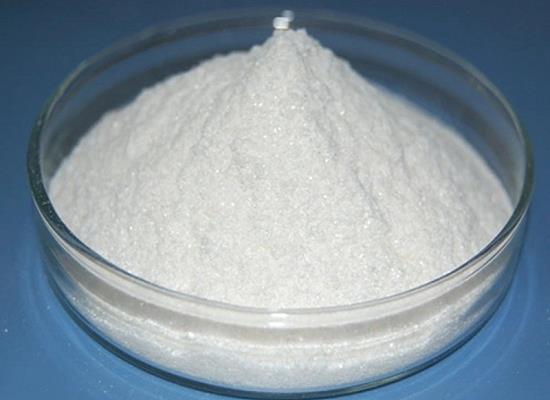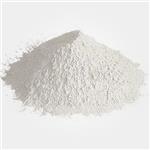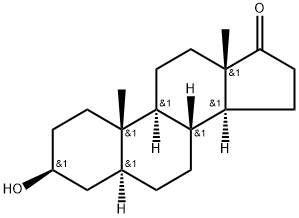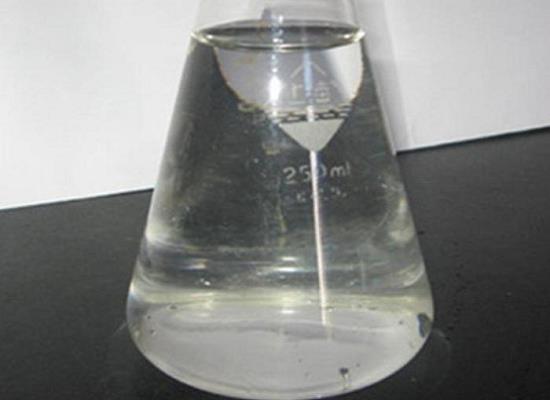Epiandrosterone: physiological effects and applications
General Description
Epiandrosterone, a natural steroid hormone and metabolite of DHEA, plays pivotal roles in physiological functions. It serves as a precursor to the potent androgen hormone DHT, influencing male sexual characteristics, muscle mass, bone density, and libido. Additionally, it has been studied for potential neuroprotective effects, supporting cognitive function and potentially mitigating neurodegenerative diseases. Epiandrosterone also affects mood and behavior, potentially influencing emotional well-being and stress response. While it has been explored as a marker for testosterone use in sports, its effectiveness is limited, particularly in detecting low-dose applications. Furthermore, epiandrosterone and its derivatives have shown promise as inhibitors of glucose-6-phosphate dehydrogenase activity, suggesting potential therapeutic significance in modulating metabolic pathways. Further research is needed to fully understand its multifaceted physiological effects and explore its potential as a therapeutic agent.

Figure 1. Epiandrosterone
Physiological effects
Epiandrosterone is a naturally occurring steroid hormone and a metabolite of dehydroepiandrosterone (DHEA) in the human body. It is produced in the adrenal glands, gonads, and brain, and plays a significant role in various physiological functions. One of the primary physiological functions of epiandrosterone is its role as a precursor to dihydrotestosterone (DHT), a potent androgen hormone. DHT is involved in the development of male sexual characteristics and is important for maintaining muscle mass, bone density, and libido. Epiandrosterone's conversion to DHT contributes to its androgenic effects, which may include promoting lean muscle growth and enhancing strength. Additionally, epiandrosterone has been studied for its potential neuroprotective effects, with some research suggesting that it may support cognitive function and protect against neurodegenerative diseases. Furthermore, epiandrosterone is believed to have an impact on mood and behavior, potentially influencing emotional well-being and stress response. Overall, epiandrosterone plays a multifaceted role in the body, influencing androgenic, neuroprotective, and psychological functions, although further research is needed to fully elucidate its physiological effects. 1
Applications
Marker of testosterone use
Epiandrosterone has been identified as a potential long-term marker for the abuse of testosterone, an anabolic agent commonly used in sports performance enhancement. However, its applicability as a marker for testosterone use has been evaluated through administration studies involving different modes of testosterone administration, including transdermal, intramuscular, and subcutaneous methods. The results of the studies indicate that epiandrosterone sulfate is less effective than conventionally used target compounds for detecting low-dose testosterone application, particularly with transdermal gel administration. While it showed greater diagnostic potential with intramuscular administration, it did not significantly extend the detection window beyond that of conventional target compounds. Furthermore, its responsiveness to higher-dose administration varied based on the magnitude of the dose administered, indicating limited utility as a marker for low-dose testosterone administration. In summary, while epiandrosterone shows some responsiveness to higher doses of testosterone administration, it does not offer a substantial extension of the detection window compared to conventional target compounds. Therefore, its utility as a marker for testosterone use in sports remains limited, particularly in detecting low-dose applications. 2
Inhibitors of glucose-6-phosphate dehydrogenase
Epiandrosterone, along with dehydroepiandrosterone, has been investigated for its inhibitory effects on mouse glucose-6-phosphate dehydrogenase activity. In a study, 3 beta-Alkanesulfonates of dehydroepiandrosterone, 16 alpha-bromodehydroepiandrosterone, epiandrosterone, and 16 alpha-bromoepiandrosterone were synthesized with moderate to high yields. These compounds were prepared through the reaction of long chain alkanesulfonyl chlorides with the respective dehydroepiandrosterone and epiandrosterone analogues. The resulting compounds demonstrated an ability to inhibit mouse glucose-6-phosphate dehydrogenase activity. This finding suggests that epiandrosterone, in its 3 beta-alkanesulfonate form, may hold promise as a potential inhibitor of this enzyme. Further research into the precise mechanism and efficacy of these inhibitors could pave the way for the development of novel therapeutic agents targeting glucose-6-phosphate dehydrogenase activity. This study sheds light on the potential pharmacological significance of epiandrosterone and its derivatives in modulating metabolic pathways. 3
Reference
1. LIPSETT MB, KORENMAN SG. ANDROGEN METABOLISM. JAMA. 1964 Nov 23;190:757-762.
2. Nair VS, Doman CE, Morrison MS, Miller GD, Husk J, van Eenoo P, Crouch AK, Eichner D. Evaluation of epiandrosterone as a long-term marker of testosterone use. Drug Test Anal. 2020 Nov;12(11-12):1554-1560.
3. Abou-Gharbia M, Cheeseman EN, Pashko L, Schwartz A, Swern D. Epiandrosterone- and dehydroepiandrosterone-3 beta-alkanesulfonates as inhibitors of mouse glucose-6-phosphate dehydrogenase activity. J Pharm Sci. 1984 Nov;73(11):1643-1645.
);You may like
Related articles And Qustion
See also
Lastest Price from Epiandrosterone manufacturers

US $9.90/g2024-05-03
- CAS:
- 481-29-8
- Min. Order:
- 1g
- Purity:
- 99%
- Supply Ability:
- 100kg

US $50.00/KG2024-04-30
- CAS:
- 481-29-8
- Min. Order:
- 1KG
- Purity:
- 99.9%
- Supply Ability:
- 1000

